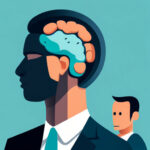Workers Beware: Hidden Dangers Threaten Your Senses
This article underscores the significance of understanding the latent risks that workplaces pose to our senses, particularly sight and hearing. It scrutinizes the prevalence, causes, and impacts of such injuries in the US, with a focus on industries most prone to these incidents. The article also highlights the role of workers' compensation benefits and effective safety protocols in fostering a safer work environment, thereby promoting awareness and encouraging preventative measures.

Key Takeaways
- Eye and ear injuries are common in the workplace and can have a significant impact on workers.
- Workers compensation insurance generally covers eye and ear injuries, providing benefits such as medical expenses, wage loss benefits, and death benefits.
- Each state has its own specific workers compensation laws, so the benefits and coverage may vary.
- Industries such as construction, manufacturing, mining, and carpentry are particularly prone to eye injuries, while industries like manufacturing, forestry, construction, and healthcare are more prone to ear injuries.
Understanding Workers Compensation for Sensory Injuries
Frequently, workers suffering from sensory injuries, such as those to the eyes or ears, are eligible for compensation under state-specific workers' compensation laws. The burden of preventing sensory injuries often falls on employers, who are mandated to ensure a safe working environment. This could involve providing appropriate personal protective equipment, implementing safety training programs, and adhering to noise control standards. Employer responsibilities also extend to securing workers' compensation insurance, which covers medical expenses, wage loss benefits, and other compensations. Recognizing the signs of sensory injuries and understanding the process of claiming compensation is critical for workers. Equally, employers must be diligent in fulfilling their responsibilities, both to protect their workforce, and to comply with legal obligations.
The Prevalence of Eye and Ear Injuries in Workplaces
We are delving into the topic of the prevalence of eye and ear injuries in workplaces, and it is both alarming and imperative to note that these sensory injuries are more common than many might think. The prevalence of eye injuries in office settings is surprisingly high, often due to prolonged exposure to computer screens, leading to conditions like dry eyes or digital eyestrain. Meanwhile, the healthcare sector is grappling with an unanticipated issue: noise exposure. Studies indicate a significant impact of noise exposure on hearing loss in healthcare workers. High noise levels in hospitals and clinics pose a threat to the auditory health of these professionals. It's clear that ensuring sensory safety at work is a critical issue that requires immediate attention.
Root Causes of Sensory Injuries at Work
In the context of occupational safety, the root causes of sensory injuries at work often lie in the exposure to harmful substances or environments, such as loud noise or harmful chemicals. These can lead to serious eye and ear injuries if not properly managed. Exposure to harsh light, airborne particles, or blunt trauma can damage the eyes, while consistent exposure to high decibel sounds can cause lasting hearing impairment. Prevention measures for sensory injuries should be a crucial part of a company's health and safety strategy. These can include regular risk assessments, provision of protective equipment, and implementation of safety protocols. Employers must ensure workers are educated about the potential risks and trained in how to protect themselves effectively. This approach not only safeguards employees' health but also contributes to a safer, more productive workplace.
The High Risk Industries for Eye Injuries
Over 20,000 eye injuries occur annually in the United States, and industries such as construction, manufacturing, and welding are among the highest risk sectors for these incidents. These sensory injuries significantly impact worker productivity, often leading to absenteeism and reduced efficiency. Strategies for preventing eye injuries in these high-risk industries include regular safety training, personal protective equipment use, and fostering a culture of safety. Employers can also implement regular vision screening to detect early signs of damage. Additionally, the use of safety barriers and engineering controls can mitigate risks associated with flying debris or harmful light radiation. It is crucial that these preventive measures are rigorously applied to protect workers' vision, maintain productivity, and ensure a safe workplace.
The Dangers of Extended Screen Exposure
Extended screen exposure, affecting millions of office workers worldwide, can lead to an array of health issues including migraines, fatigue, and significant eye strain. These health effects of extended screen exposure are not just temporary discomforts. Chronic manifestations can progress to serious conditions such as Computer Vision Syndrome, characterized by blurry vision, dry eyes, and neck and shoulder pain. Preventing eye strain from prolonged screen time is paramount. Strategies include regular breaks, utilizing the 20-20-20 rule (every 20 minutes, look at something 20 feet away for 20 seconds), adjusting screen brightness, and using eye drops. Implementing these actions can mitigate the risks. Awareness and preventative measures can significantly reduce the adverse impact of our increasingly screen-centric work environments.
How Infectious Diseases Impact the Eyes in the Workplace
One must be aware that infectious diseases can potentially affect our eyesight, particularly in the workplace where transmission can occur through contact with contaminated surfaces or through the mucous membranes of the eyes. Implementing strategies for preventing eye infections in the workplace is crucial for maintaining workers' visual health. These strategies include regular cleaning of surfaces, proper hand hygiene, and usage of personal protective equipment. Importantly, the role of employers in protecting workers' eye health cannot be overstated. Employers must ensure a safe and hygienic work environment, provide necessary eye protection gear, and conduct regular training sessions on eye safety. Remember, safeguarding one's eyesight is not only an individual's responsibility but also a collective effort.
The Most Hazardous Industries for Ear Injuries
The manufacturing sector's high noise levels, coupled with the construction industry's frequent exposure to loud machinery, make these industries particularly hazardous for ear injuries. Other sectors like mining, forestry, transportation, and healthcare also pose significant risks. The impact of workplace noise on overall health is profound, leading not only to hearing loss but also to conditions such as hypertension and sleep disturbances. Implementing strategies for preventing ear injuries is paramount. These include reducing noise at its source, enclosing or creating barriers around noisy equipment, increasing distance from the noise source, limiting time spent in noisy areas, and consistently wearing hearing protection. The integration of these strategies can significantly reduce the risk of ear injuries, safeguarding workers' auditory health.
Identifying Hazardous Noise Levels in Your Workspace
Remarkably, identifying hazardous noise levels in your workspace is a crucial step in preventing potential hearing damage and ensuring overall auditory health. This process involves understanding the effects of noise on hearing health and implementing strategies to mitigate exposure. One such strategy involves using sound level meters to measure noise levels and identify sources of excessive noise. Once identified, these sources can be controlled through engineering modifications, like using quieter machinery or creating noise barriers. Additionally, administrative controls can limit workers' exposure duration. As part of strategies for preventing eye injuries, wearing appropriate safety equipment is vital. Just as earmuffs can protect against noise, safety goggles can shield eyes from harmful particles or irritants. By addressing both eye and ear hazards, we can foster safer, healthier work environments.
Strategies for Reducing Noise Exposure at Work
Undoubtedly, implementing noise reduction strategies at work, such as using quieter machinery, creating noise barriers and limiting exposure duration, is essential for preserving employees' auditory health, and it can also lead to increased productivity and overall job satisfaction. Among the strategies for managing workplace noise, implementing engineering controls for noise reduction is a crucial step. This may involve modifying machinery to reduce noise levels, isolating the noise source or introducing absorptive materials to dampen sound. Workers should also be educated about the importance of regular breaks from noise exposure and the correct use of personal protective equipment. Rigorous enforcement of these measures can significantly decrease the risk of auditory damage, fostering a safer and healthier work environment.
The Importance of Personal Protective Equipment
Personal Protective Equipment (PPE), such as safety glasses and earplugs, plays a pivotal role in preventing workplace injuries and maintaining the overall health of employees. Their importance lies not only in the protection they offer but also in the proper training for using them, which ensures they provide maximum safety. Employers are not only responsible for providing suitable PPE but also for enforcing its use for employee safety. This includes regular checks to ensure the equipment is in good condition, fits properly, and is used correctly. The importance of PPE in the workplace cannot be overstated. It acts as a barrier against potential hazards, ensuring that employees can perform their duties safely and effectively, ultimately contributing to a healthier, more productive working environment.
The Long-Term Effects of Workplace-Related Sensory Injuries
Long-term effects of workplace-related sensory injuries, such as vision loss and hearing damage, can drastically alter an individual's quality of life, and they often require extensive medical treatment and rehabilitation. Preventing long-term consequences starts with understanding the risks and implementing safety measures. Early intervention for sensory injuries is crucial, as prompt diagnosis and treatment can significantly improve the prognosis. It involves regular screenings and immediate attention to symptoms like blurred vision or tinnitus. Companies should establish comprehensive safety programs, prioritizing the use of personal protective equipment and training on handling hazardous materials. Regular breaks, especially for those working on screens or in noisy environments, are also vital. Through these strategies, we can mitigate the life-altering impacts of sensory injuries in the workplace.
Legal Rights and Compensation Claims for Sensory Injuries
How frequently are sensory injury victims successful in their legal pursuits for adequate compensation, and what factors influence these outcomes? Studies indicate that success rates are significantly contingent on the quality of legal representation and understanding of one's legal rights and compensation claims for sensory injuries. Employers play a crucial role in preventing sensory injuries at work. However, when prevention fails, victims rely on workers' compensation insurance or lawsuits for remuneration. Factors influencing outcomes include the severity of the injury, the ability to demonstrate employer negligence, and the jurisdiction's compensation laws. It's essential for victims to understand their legal rights and consult with knowledgeable professionals to navigate the complexities of compensation claims. Protecting workers' sensory health should be paramount in any workplace.
Frequently Asked Questions
What Are Some Tips for Preventing Eye and Ear Injuries in the Workplace?
Preventing eye and ear injuries in the workplace requires a multi-faceted approach. Adopting Protective Gear Advancements such as high-quality safety goggles, earplugs, and noise-cancelling headphones is crucial. Regular Employee Awareness Training about the potential hazards and safe work practices can also significantly reduce the risk of injuries. Furthermore, regular safety checks and maintaining a clean, organized work environment is essential. It's important to remember that prevention is always better than cure.
How Can Employers Improve Workplace Safety to Reduce the Risk of Eye and Ear Injuries?
Enhancing workplace safety to mitigate the risk of eye and ear injuries is paramount. Employers can achieve this by enforcing the usage of protective gear such as safety goggles and earmuffs, which provide a physical barrier against potential hazards. Furthermore, implementing comprehensive safety training programs can equip employees with the knowledge and skills necessary to identify and prevent risks, thereby fostering a safer working environment. Regular monitoring and auditing of safety practices can also ensure ongoing compliance and improvement.
What Steps Should a Worker Take Immediately After Suffering an Eye or Ear Injury at Work?
Following an eye or ear injury at work, immediate medical attention is paramount. This facilitates proper diagnosis, treatment, and documentation of the injury. Such documentation is crucial for any ensuing workers' compensation claims. Inform your employer about the incident, detailing how it occurred. This is essential for injury investigation and prevention of future incidents. Subsequently, file a claim for workers' compensation benefits to cover medical expenses and loss of income.
Besides Eye and Ear Injuries, What Other Types of Sensory Injuries Can Occur in the Workplace?
Workplace environments can lead to various sensory injuries beyond eye and ear damage. Sensory overload impacts can result from continuous exposure to high levels of noise, light, or activity, potentially leading to stress, anxiety, and cognitive dysfunction. Chemical exposure consequences can include skin and respiratory system damage. Certain chemicals, when inhaled, ingested, or contacted, can harm the sense of smell, taste, or touch, leading to both temporary and chronic conditions.
Are There Any New Technologies or Innovations Being Developed to Reduce the Risk of Eye and Ear Injuries in the Workplace?
Emerging protective gear technologies are being developed to reduce the risk of eye and ear injuries in the workplace. These innovations include advanced safety goggles and earmuffs with enhanced noise cancellation capabilities. Additionally, sensory health awareness programs are being implemented to educate employees on the importance of protecting their senses and how to use these new technologies. These efforts aim to create safer work environments and preserve the long-term health of workers.
Conclusion
In conclusion, sensory injuries in the workplace, particularly those affecting hearing and vision, pose significant health risks. Understanding their prevalence, causes, and long-term effects is crucial for prevention and compensation. High-risk industries and occupational habits, such as prolonged screen exposure and excessive noise, necessitate effective safety protocols, including the use of personal protective equipment. Awareness of legal rights and compensation claims further empowers workers to safeguard their wellbeing.

This post has been generated by AI and was not reviewed by editors. This is Not legal advice. Please consult with an attorney.




